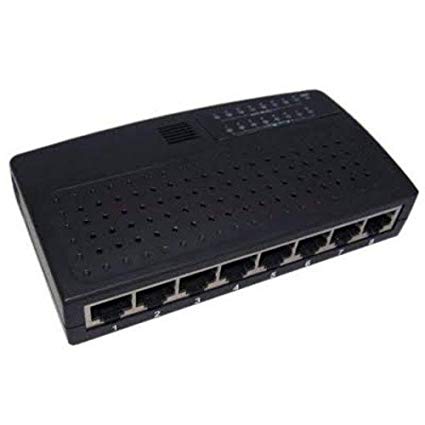In the realm of computer networking, hubs serve as essential devices that interconnect multiple network devices and facilitate the exchange of data packets. Among the various types of hubs, the Active Hub stands out as a powerful and intelligent solution. In this article, we will delve into the concept of an Active Hub, its functionalities, and its impact on network performance.

What is an Active Hub?
An Active Hub, also known as a Powered Hub or an Intelligent Hub, goes beyond the basic functions of a passive hub. Unlike its passive counterpart, an Active Hub actively participates in the data transmission process, enhancing network performance and connectivity. It possesses built-in circuitry and intelligent features that enable it to amplify and regenerate signals, effectively overcoming the limitations of a passive hub. Virtually all hubs sold today are active hubs.
Signal Amplification and Regeneration
One of the primary functions of an Active Hub is signal amplification. As data signals travel through a network, they gradually weaken due to attenuation. However, an Active Hub actively boosts these signals, ensuring their strength and integrity. Additionally, an Active Hub regenerates the signals, eliminating any noise or distortion that may have been introduced during transmission. This ensures that the data reaches its destination reliably and without errors.
Expanding Network Capacity
Active Hubs also play a crucial role in expanding network capacity. With multiple ports available, they allow numerous devices to connect and communicate simultaneously. For example, imagine an office environment where computers, printers, and other network devices need to be interconnected. An Active Hub with multiple ports provides the necessary connectivity and flexibility to support the entire network infrastructure seamlessly.
Intelligent Traffic Management
Active Hubs often incorporate intelligent features to manage network traffic effectively. They can analyze data packets, identify their destination addresses, and route them efficiently. This helps prevent congestion and ensures optimal data flow throughout the network. By intelligently managing traffic, an Active Hub contributes to enhanced network performance and minimizes the chances of bottlenecks or data collisions.
Examples of Active Hub Usage
Active Hubs find applications in various network environments. They are commonly employed in office networks, where they serve as central points for connecting computers, printers, and other devices. Additionally, they are utilized in industrial settings, allowing for reliable connectivity and efficient data transfer between machines and control systems. Active Hubs also serve as essential components in data centers, facilitating high-speed connections and smooth data exchange among servers.
Conclusion
In summary, an Active Hub stands as a vital device in modern network architectures, providing signal amplification, signal regeneration, and intelligent traffic management. With its ability to expand network capacity and optimize data flow, an Active Hub contributes significantly to overall network performance. By understanding the functionalities and advantages of an Active Hub, network administrators can make informed decisions when designing and implementing robust and efficient network infrastructures.
See also: